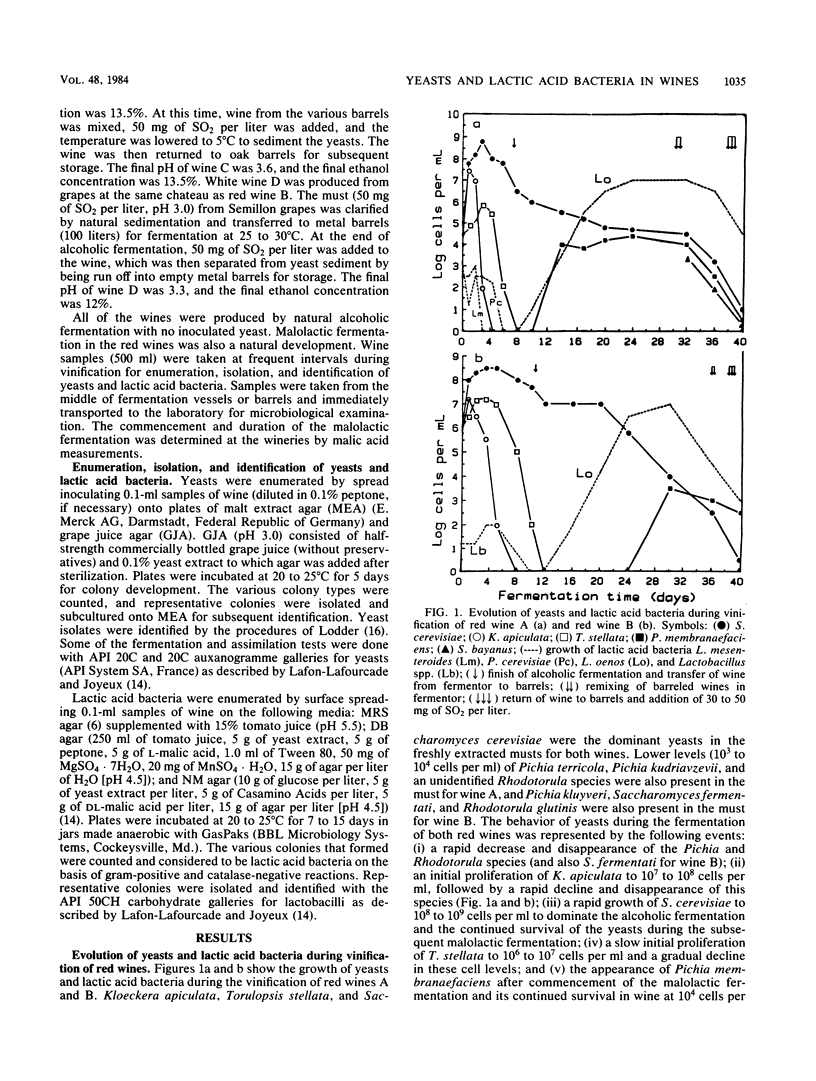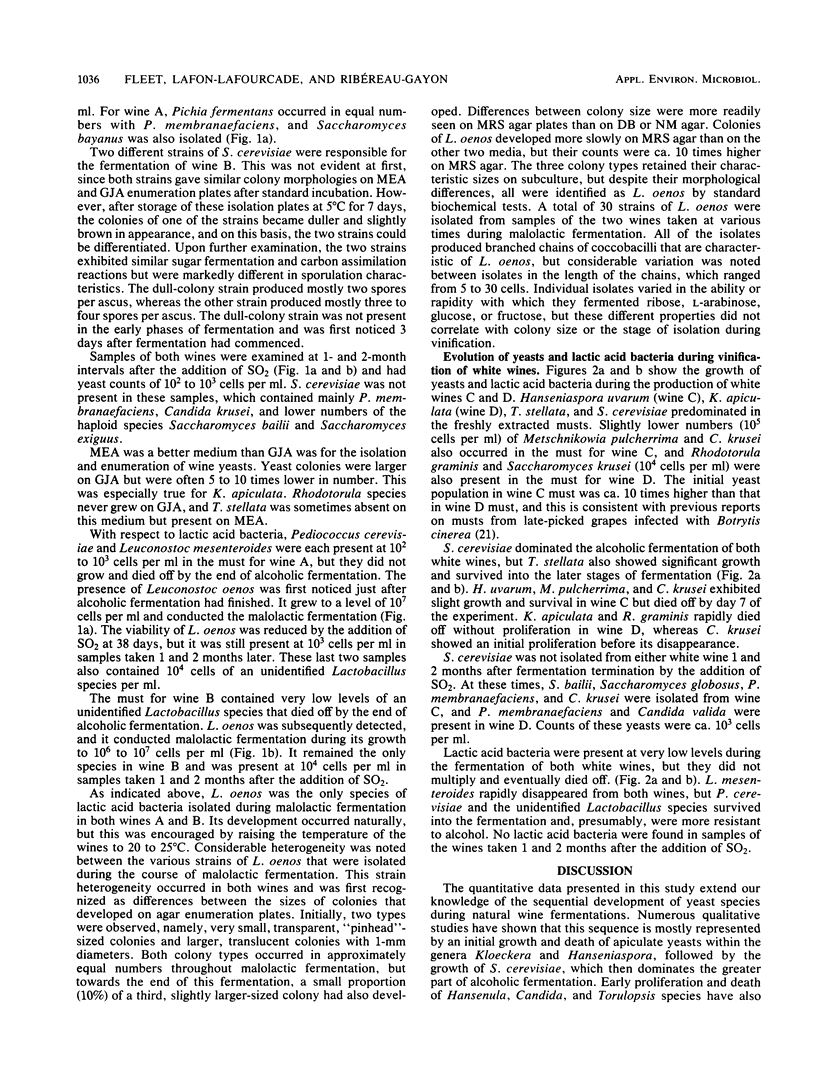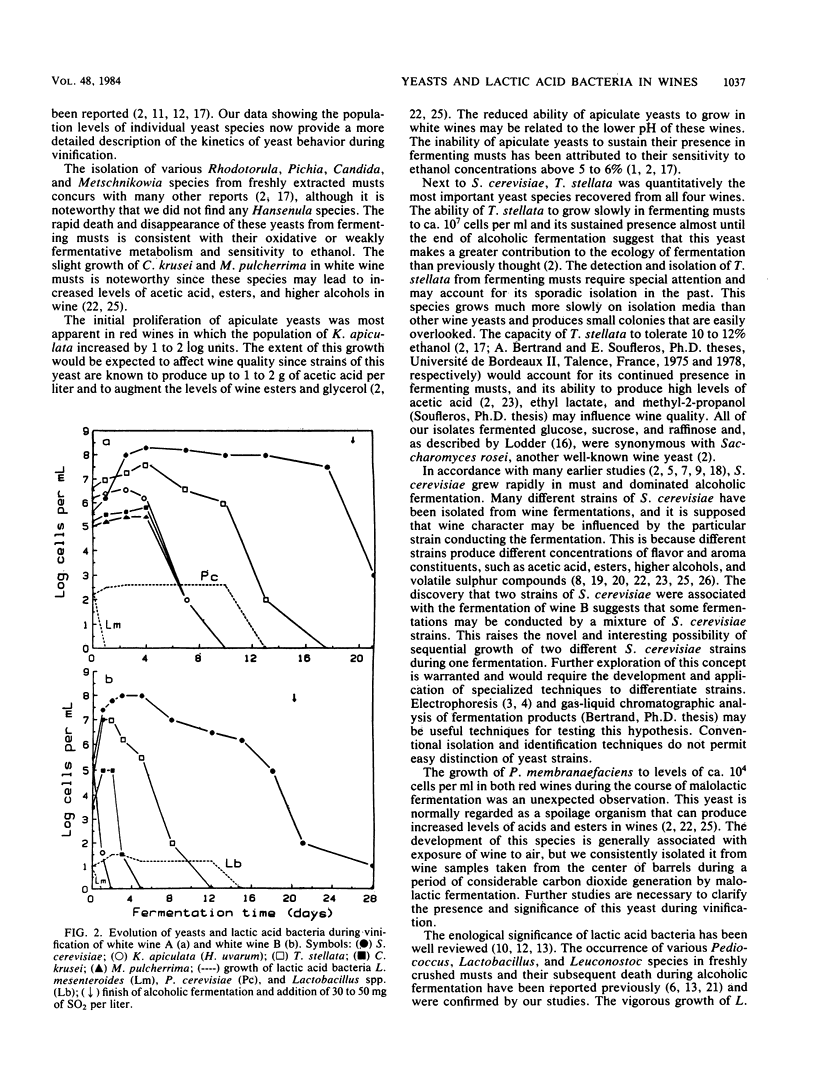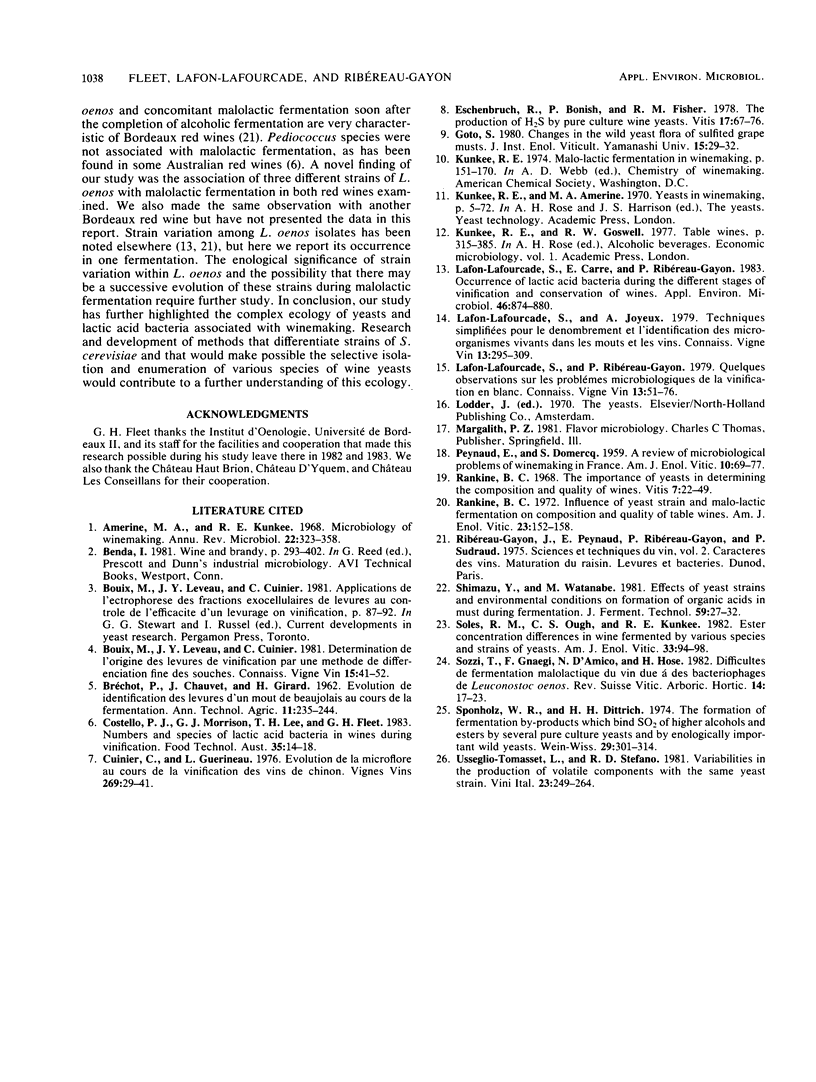Abstract
The levels of yeasts and lactic acid bacteria that naturally developed during the vinification of two red and two white Bordeaux wines were quantitatively examined. Yeasts of the genera Rhodotorula, Pichia, Candida, and Metschnikowia occurred at low levels in freshly extracted grape musts but died off as soon as fermentation commenced. Kloeckera apiculata (Hanseniaspora uvarum), Torulopsis stellata, and Saccharomyces cerevisiae, the dominant yeasts in musts, proliferated to conduct alcoholic fermentation. K. apiculata and eventually T. stellata died off as fermentation progressed, leaving S. cerevisiae as the dominant yeast until the termination of fermentation by the addition of sulfur dioxide. At least two different strains of S. cerevisiae were involved in the fermentation of one of the red wines. Low levels of lactic acid bacteria (Pediococcus cerevisiae, Leuconostoc mesenteroides, and Lactobacillus spp.) were present in grape musts but died off during alcoholic fermentation. The malolactic fermentation developed in both red wines soon after alcoholic fermentation and correlated with the vigorous growth of at least three different strains of Leuconostoc oenos.
Full text
PDF




Selected References
These references are in PubMed. This may not be the complete list of references from this article.
- Amerine M. A., Kunker R. E. Micobiology of winemaking. Annu Rev Microbiol. 1968;22:323–358. doi: 10.1146/annurev.mi.22.100168.001543. [DOI] [PubMed] [Google Scholar]
- Lafon-Lafourcade S., Carre E., Ribéreau-Gayon P. Occurrence of lactic Acid bacteria during the different stages of vinification and conservation of wines. Appl Environ Microbiol. 1983 Oct;46(4):874–880. doi: 10.1128/aem.46.4.874-880.1983. [DOI] [PMC free article] [PubMed] [Google Scholar]


